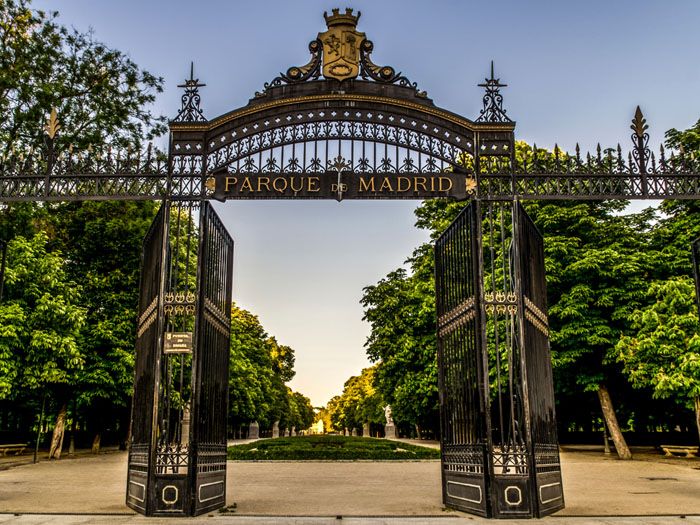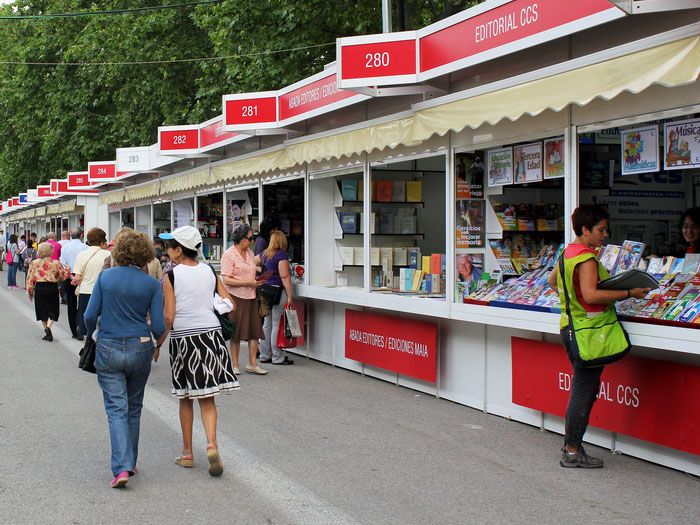Summer in Madrid and Need to Study? Follow our Guide | donQuijote

It’s summertime in Madrid, which means two things: it’s ridiculously hot out, and the city is bursting with things to see and do! Here in Madrid, summertime is lived out on the streets. If you’re a student with our don Quijote School, however, it also means you’ve got to dedicate some time to studying. While studying Spanish is great, we understand the challenges students face during the summer months… Maybe your weekend study plans went out the window with those last-minute tickets to that music festival. Or perhaps you’re itching to finish studying early so you can grab a spot on that hot new rooftop bar. Or let us guess: your apartment doesn’t have air-conditioning, thus leaving your attempt to study at home feeling more like a Bikram yoga session.
So, how to maximize your productivity so that you can get out and enjoy these long summer days as quickly as possible? A good place to start is by finding a great workspace that works for you. Check out some of these spots that make summer studying in Madrid cool, easy and enjoyable.
Libraries
Madrid is home to the largest library in Spain and one of the biggest in the world: the Biblioteca Nacional de España (National Library of Spain, Paseo de Recoletos, 20). While its unparalleled collection and majestic beauty will no doubt impress you, it’s not the easiest place to study: not only do you need a library card or carné to access the study areas, the library also heavily restricts what you can bring in (jackets, backpacks, books… laptops are permitted, however).
The Instituto Internacional (International Institute, Calle Miguel Ángel, 8) is a terrific, more low-key option for those who enjoy studying in libraries. If you relish the cozy, old-timey feeling of being tucked away between shelves of antique books, then this is the perfect place for you. Its small library – which you can access without a library card – is located in the building’s lower level. While eating and drinking is technically not permitted, the space is so laid-back that discreetly sipping a Redbull will surely go unnoticed.
If you prefer libraries of the more modern, sterile variety, check out the Biblioteca Pública Municipal Conde Duque (Conde Duque Public Municipal Library, Calle Conde Duque, 11). The library boasts of two giant study halls, with long rows of tables filled with university students. If you work best in intensely quiet, barren environments, you’ll definitely flourish here! While a library card isn’t required to enter, you will have to register with the front desk if you want to access the WiFi. The best part about this library? Conde Duque is a huge cultural center that also houses a free-access museum, an instruments lending library, and even transforms its outdoor space into a large terrace/bar with outdoor cinema during the summer months – which means that you when you finish studying, the fun is just a few steps away!

Study-friendly cafés
Sure, there’s always the big chains… but you didn’t come to Madrid to spend all afternoon in a Starbucks! Madrid’s city center (student-friendly zones such as Malasaña and Chueca in particular) has an unlimited supply of quaint cafés, perfectly equipped for studying. Café Federal (Plaza de las Comendadoras, 9) is a great choice: spacious, sunny, good WiFi and great food. As the café is a local favorite for Spaniards and ex-pats alike, staff and menus are English-friendly.
Somewhat of a haven for young ex-pats is the hipster café La Bicicleta (Plaza de San Ildefonso, 9), famous for its laid-back, international vibe. Here outlets and tables abound – but so do the patrons. This place is so popular, it’s sometimes difficult to find a seat, and its menu has some steep prices. But if you thrive in homey, friendly and lively environments, grab your headphones and get studying!
La Fugitiva Librería Café (Calle de Santa Isabel, 7) is an intimate, cozy book shop with small tables tucked away between its shelves. Although more a book store than a café, it does offer coffees, teas and some sweet treats, as well as WiFi access. It’s the perfect spot for when you’re looking for a quiet retreat from the hectic streets of Madrid.

Try the unconventional: Parks, bars and terraces
What about studying in a palace, for example? The Museo del Romanticismo (Calle San Mateo, 13) is located in a former palace and has a lovely Garden Café. You don’t need to enter the museum to sit and have a coffee in their garden, although the museum is also a beautiful must-see, and offers reduced prices and free admission on Saturdays.
Madrid is full of beautiful luxury hotels –maybe you can’t afford to stay in one, but you can certainly spend a few hours in their lobby, café or bar. Plenty of hotels have spaces open to the public, so why not venture in and study like the rich and famous? If you’re looking for some suggestions, both The Hotel Wellington and The Westin Palace have various dining spaces, and Hotel Orfila has a beautiful outdoor garden.
If you’re looking for a more laid-back environment, you’d be surprised how great some of those typical bares de abuelos are for studying. You know, that no-frills, local bar where you almost never see anyone under the age of 60? As long as you avoid going during high-traffic times (when a soccer game is on, for example), you’re likely to find a nice corner to work quietly. Although most of these bars don’t come with WiFi, you may get lucky and find one, such as Bar Sidi in Malasaña (Calle de Colón, 15). The best part is, these bars are made for locals, which means they likely won’t have outrageous prices. So go ahead – order than fourth coffee, you deserve it.
Then of course, for those who enjoy studying outdoors, Madrid has plenty of parks and green spaces to lay down a blanket and take out the books. Beyond the expansive Parque del Buen Retiro, there’s also the Parque de Berlín and the Parque del Oeste, to name a few.
So there you have it, a great selection of places to study this summer in Madrid. Not only will you get your schoolwork out of the way, you’ll stay cool and get to explore all the best, most unique, and oftentimes historic spaces Madrid has to offer its students. Happy studying!

















